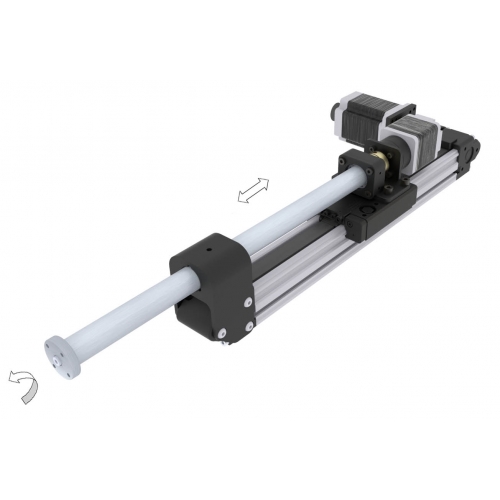In this two-part series, we go over the basic definition of types of repeatability and their application in linear motion and actuation applications. Part 2 covers bidirectional repeatability. (Click here for Part 1.)
Information courtesy of IntelLiDrives Corp.
As noted in Part 1, repeatability can be defined as the variation in results for a series of moves or, more analytically, the width of the dispersion about the mean for a significant number of positioning trials. Repeatability, a statistical quality, is commonly defined for a normal distribution by the dispersion width corresponding to a number of standard deviations.
Unidirectional repeatability deals with motion in one direction only. Here, we cover motion in two directions and thus must consider bidirectional repeatability.

A high level of unidirectional repeatability is relatively easy to achieve since backlash, the motion lost on reversal that contributes to bi-directional repeatability, does not affect unidirectional movement. Of course, approaching targets from a single direction sacrifices throughput times. Bidirectional repeatability is more demanding.
A high degree of bidirectional repeatability presupposes high-level unidirectional repeatability. Tolerances between drive train elements (lead screws/nuts, meshed gears, multi-piece couplings, etc.) must be closely controlled and preloads must be adjusted in order to limit backlash, which may be considered as a mechanical dead band in the motion system.
In programmable motion systems, it’s possible to remove backlash by means of a small incremental move before making normal moves in a given direction. Minimizing either the number of interacting drive train components (gear trains, belts/pulleys, etc.) or the play or looseness between components (which develops as components wear) will also reduce backlash.
In rolled ball screw systems, a backlash is typically less than 0.001 in., while high-precision ground ball screws exhibit backlash of less than 0.0001 in.
When high performance and maximum production throughput are required, bidirectional repeatability will usually be required as well.







Leave a Reply
You must be logged in to post a comment.